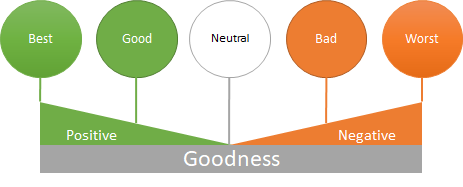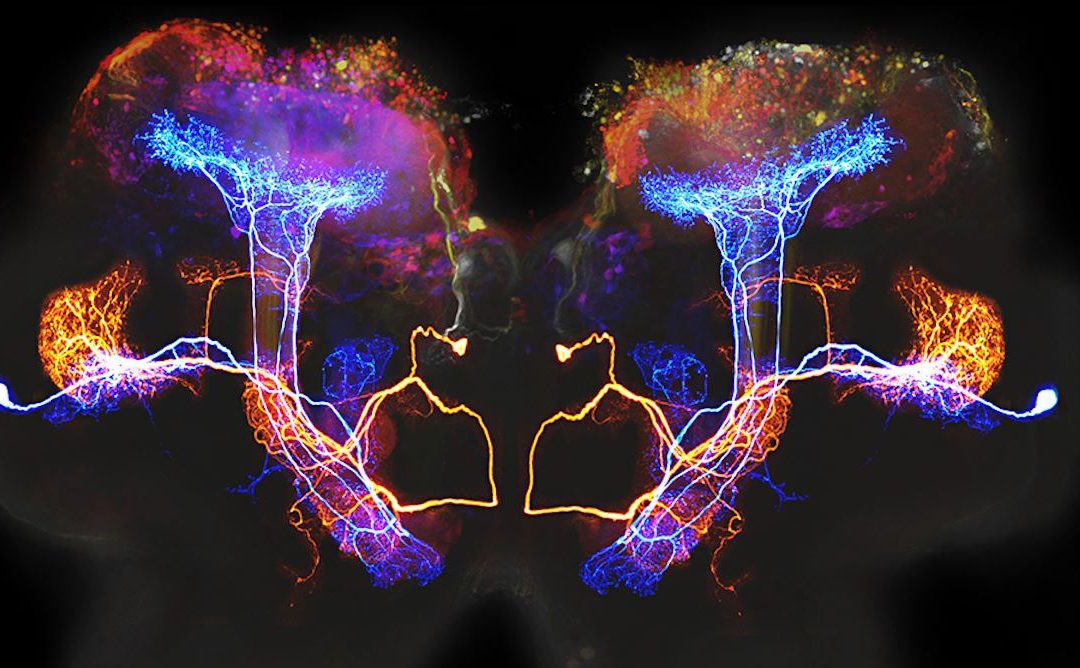Mental Redundancy
The human mind, being a complex distributed system that evolved as independent layers during a period of millions of years, is by no means free of redundancy. By redundancy, I simply refer to the ability of different brain areas to store the same kind of information, or in the abstract mental sense, the ability to codify the same exact concepts in various ways.
The first redundancy I would like to address, as I (and most ancient philosophers) believe it is the most important perception upgrade of all, is the perception of opposition.
Codifying Opposition
The relation of opposition – the human mind has two different ways of codifying opposing concepts. One as a connection, and another, as a collection.
Binary opposition is the simpler, more basic type of connection. It is a somewhat primitive way of codifying opposition that would be structured as two nodes with a negative relationship between them.
The hierarchical collection, however, represents a scale that can encapsulate different levels of the same concept. It is used to code both opposition as well as intensity. In a way, it codifies opposition as negative intensity. It can be used to represent information regarding the level of difference between similar concepts, and the order in which they manifest a common property.
As an example, let’s look into the concept of good and bad.
Naturally, since good and bad are opposites, they are perceived as two opposing binary concepts. Defining bad as simply being the opposite of good.

However, as we learn that there are different levels of good and bad, while some things may also not be good nor bad, we begin to perceive these concepts not as opposing forces, but as different levels of the core unifying principle of goodness. Some positive, some negative, some week some strong, and some perfectly balanced.

Furthermore, making the effort to unify these forces within one’s own mind would increase the resolution of their perception, sort of speak, from the mere binary positive or negative to a level of perception that’s better equipped to comprehend the subtle differences present in reality.
Unifying Concepts
How can we tell when concepts should be united, you ask?
Well, that’s a good question!
To determine which concepts should be unified, I use the principle of non-opposition. Here is the principle, explained by my favorite philosopher, Socrates: “the same thing will not be willing to do or undergo opposites in the same part of itself, in relation to the same thing, at the same time”.
From that ancient logic, or perhaps merely a description of our shared innate logic. it would follow that if seemingly separate entities can’t seem to hold contradictory views regarding the same object at the same time, then they must actually be two facets of the same single entity.
This means that if something can’t be both good and bad at the same time, then these two concepts must actually be two different facets of the same concept. Just like something can’t be both long and short, or heavy and light.
Coding reality in such a way would allow an agent to perceive reality in a more meaningful and accurate manner, making it easier to later apply common sense.
Other United Scales
Some other concepts that can be perceived as scales and you wouldn’t usually think about it, are:
- Survival [Decay – Survive – Flourish]
- Life [Dead – Sick – Healthy – Lively – Exuberant]
- Truth [Impossible – unlikely – possible – probable – definite]
- Days of the week [Monday… Sunday]
- All human emotions


Recent Comments